Whether you are looking to change the location of your virtual private network for privacy, security or geolocation issues, you can do so easily using a VPN service. Let’s dive straight into the basics and the step-by-step guides for computers, macOS, Windows, Android and iPhone to help you change the location of your VPN.
Can I change location without a VPN?
The main question many users have is whether they need a VPN service to change their location. The answer is Yes.
In theory, advanced users and businesses can change the location of a VPN manually, but this requires having another network available to them with a different location. Windows, macOS, Android and iPhone do not allow direct VPN location changes without network information, nor do they offer built-in VPN features. These operating systems focus on providing secure connections to pre-configured VPNs.
SEE: How to Use a VPN: 4 Easy Steps to Get Started (TechRepublic)
How to change the VPN location on your computer?
To change the VPN location on your computer, you can follow relatively straightforward steps. These will vary slightly depending on the operating system of your device.
Change VPN location on macOS and Windows
Let’s break down the steps to change the VPN location for macOS and Windows users. While these two operating systems do not usually share the same step-by-step guides, when it comes to VPN, the process of changing the location for both OS is identical.
Follow these straightforward steps to change the VPN location on Windows or Mac:
- Download VPN: If you have no VPN service, start by downloading a trusted (free or paid) VPN service. Popular VPNs include Surfshark, NordVPN, PrivadoVPN, TunnelBear, Proton VPN, ExpressVPN and others. Make sure the app is available in the Apple Store.
- Install and open the app: Follow the installation instructions and launch the VPN app.
- Sign in (if required): Some free or paid VPNs might require you to sign in with your account credentials.
- Choose a location: The VPN app should display a list of available server locations. Select your desired location. (Free VPNs might have limitations on location choices compared to paid plans.)
- Connect to VPN: Click the “Connect” button or similar option within the app.
- Once your connection is established, your location and your IP will change (Figure A).
- To change your VPN location and IP again, simply connect to another country in your VPN app.
Figure A
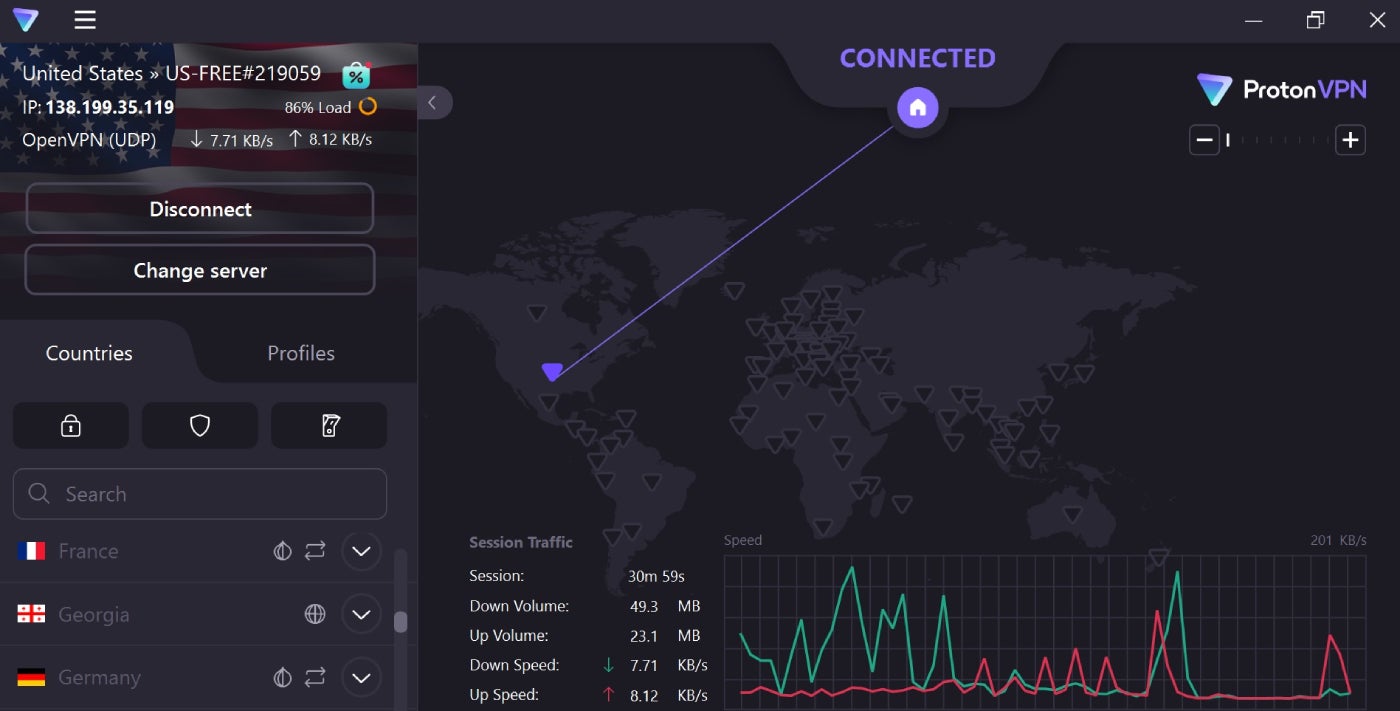
Note: Free VPN providers tend to offer free locations on every continent, with full lists of locations unlocked with paid subscriptions.
Another simple method to change the location of the VPN is to use the Tor browser — a safe privacy-focused browser that allows users to change locations, bypass guardrails and hide their IP addresses.
SEE: Free VPN vs Paid VPN: Which One Is Right for You? (TechRepublic)
Change VPN location on Chrome, Safari, Firefox and others
Due to the lack of built-in tools, web browsers can only change the VPN location using a reliable VPN app. To change the location of your browser, follow the steps listed above. The steps described above will also apply to Chrome, Safari, Firefox and other browsers.
Remember that changing the VPN on a web browser will affect your default geolocation, and while this may open up content restricted by countries, it will also affect your web experience. For example, if you choose to change your location to Japan, your browser might return web searches, and display content in Japanese language.
Note that going to chrome://settings/content/location will not change your IP or VPN location, as this feature was created to block or allow websites from requesting your location, depending on your preference (Figure B).
Figure B
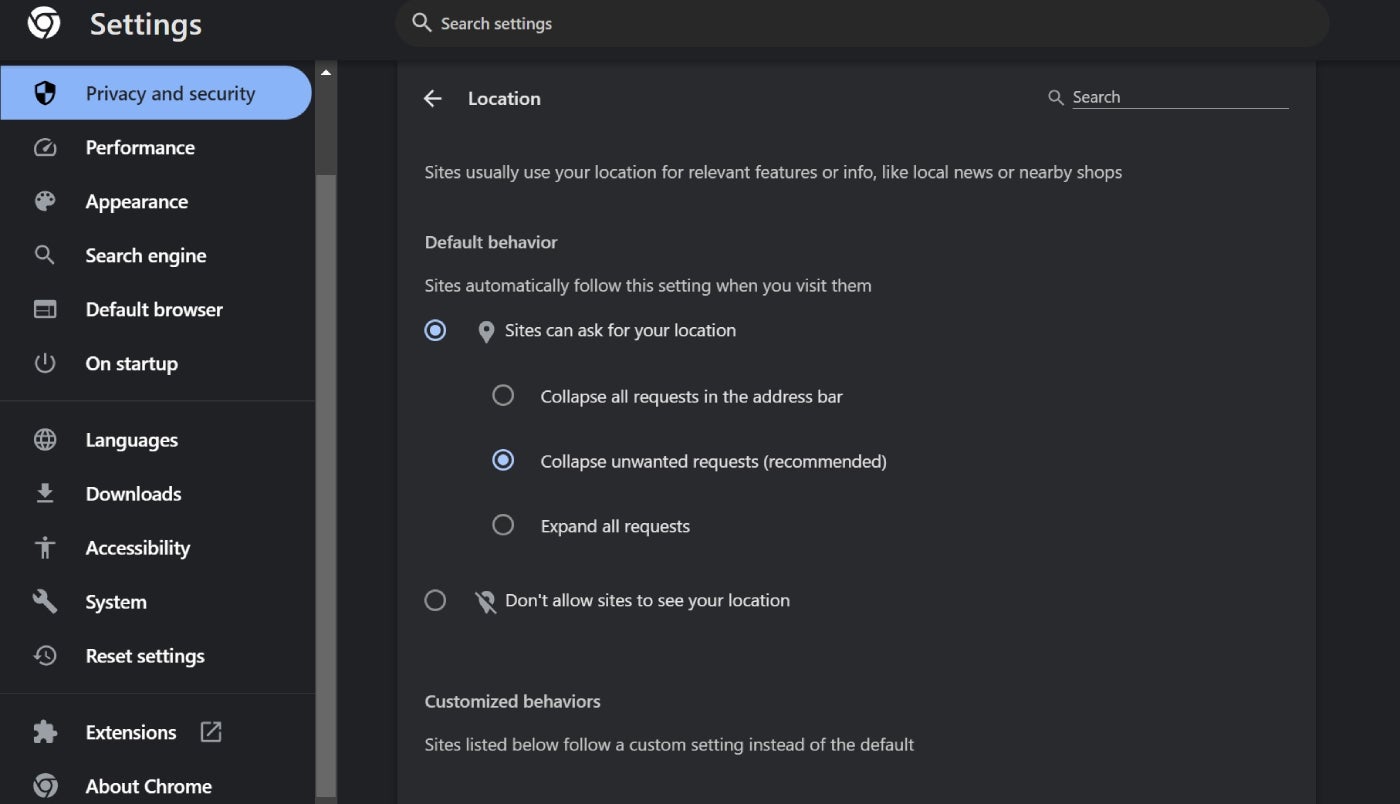
Developers’ tools, like those found in the Chrome Developers panel, cannot be used to change VPN or IP locations. These tools are only meant for developers to test their products in different regions but do not change an IP address or a VPN location.
How to change the VPN location on your iPhone and Android?
Neither iPhone (iOS) or Android devices provide built-in VPN features. Similarly, as we mentioned with computers, to change the VPN location on your iPhone or Android device, users will need to download a trusted VPN service and install it on the phone.
To change the VPN location on your iPhone or Android, follow these steps:
- Download a VPN app hosted in the Apple Store or Android Play Store
- Launch the VPN app.
- Create an account and sign in (Figure C).
Figure C

- Choose a location. The app should display a list of available server locations. These locations are usually shown on a global map, listed by country, city or even specific server names. Select your desired location (Figure D).
Figure D
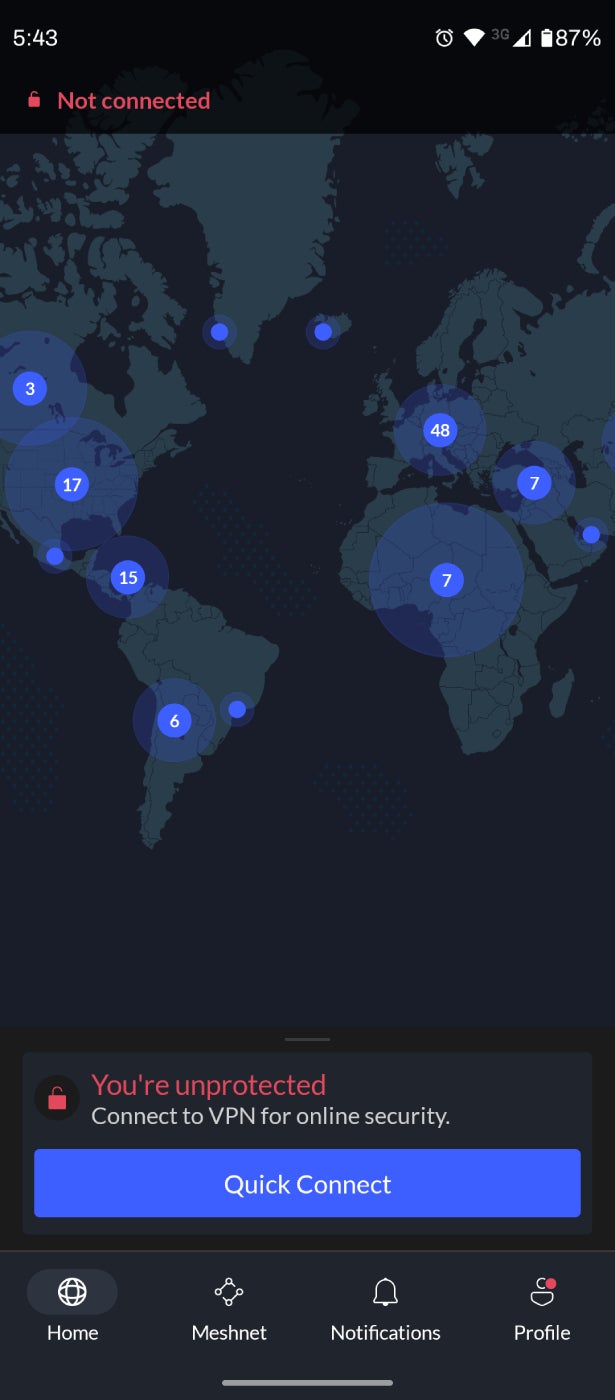
- Click on Connect or Quick Connect.
- The VPN app will prompt a Connection Request, click OK or Allow (Figure E).
Figure E
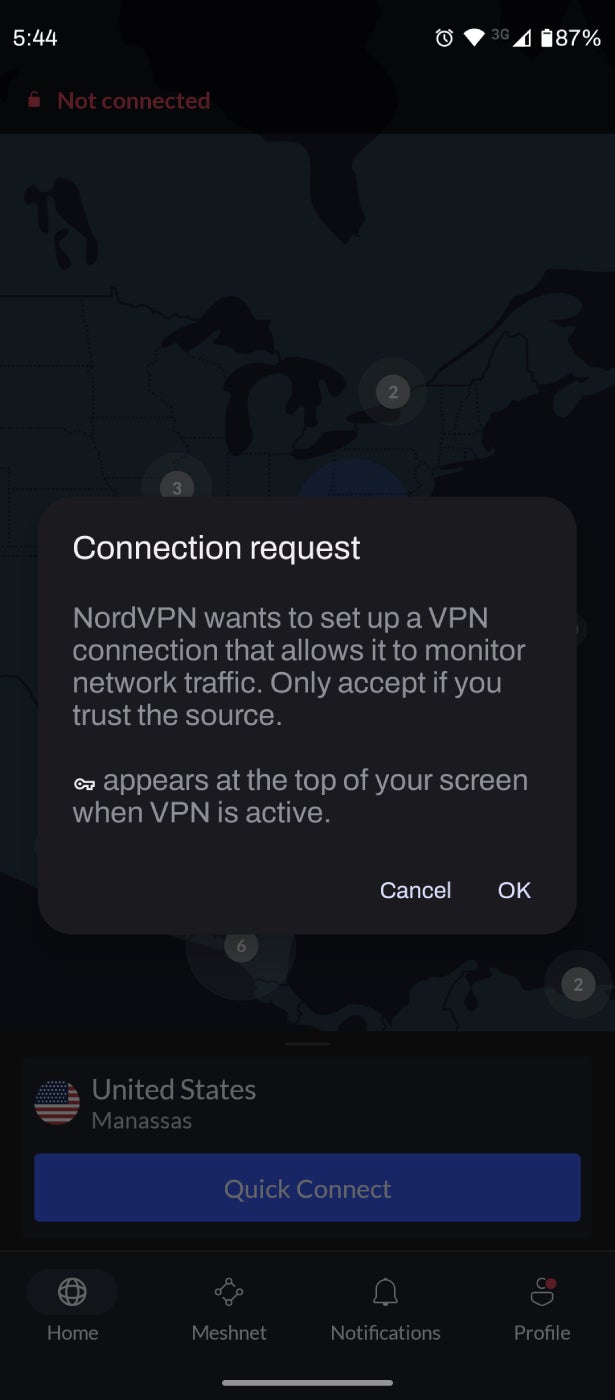
- The app will display a connection status once it’s successfully connected to the VPN server (Figure F).
Figure F
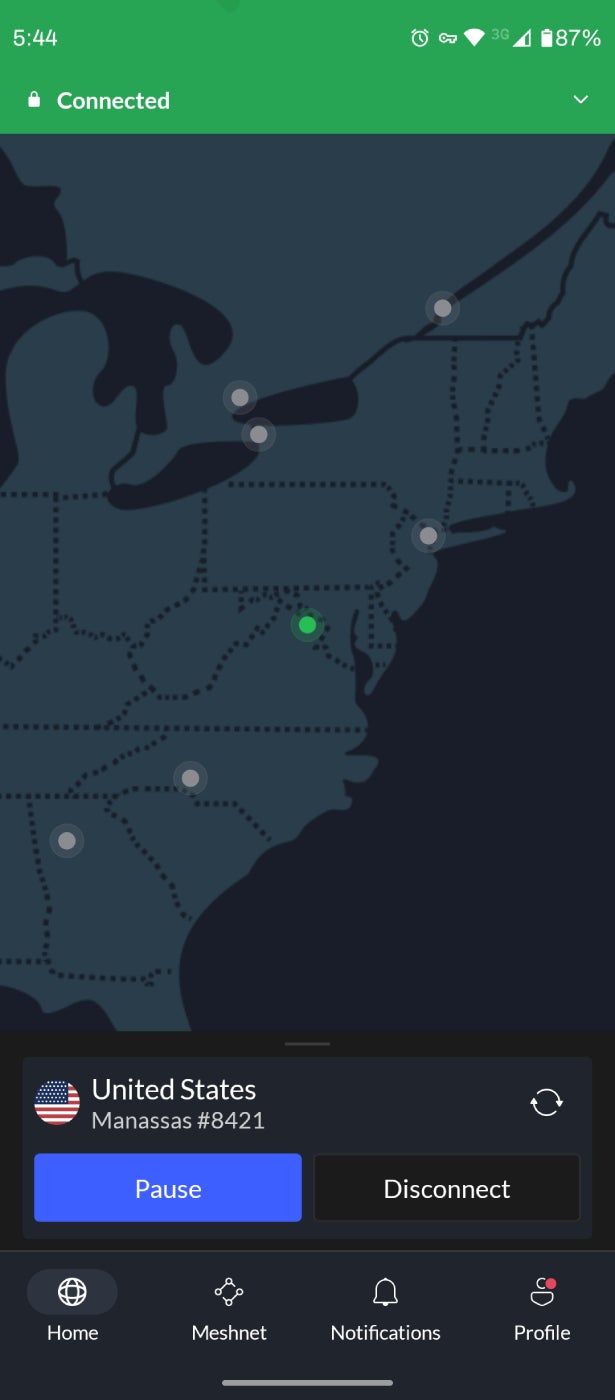
Note that free VPNs often have limitations on available locations compared to paid subscriptions.
For this step-by-step guide we used Norton Secure VPN, but the steps are exactly the same (or very similar) if you are using another popular VPN app.
These steps work on Android and iOS devices.
SEE: The 7 Best iPhone VPNs (Recommended for 2024) (TechRepublic)
Challenges and benefits: Why change your VPN location
Changing the VPN location brings both benefits and problems. It’s important to balance these out. Most of the challenges associated with VPNs are associated with their performance, which tends to be slower than normal, especially on smartphones and mobile devices. However, this performance will vary depending on what VPN providers you are using.
On the other hand, using VPNs has numerous benefits. With VPNs, users can:
- Bypass geo-restrictions: Access content that may be blocked in your region, like streaming services or websites.
- Enhanced privacy: Mask your IP address and location, making it harder for websites and trackers to monitor your online activity.
- Improved security: Encrypt your internet traffic on public Wi-Fi networks, protecting your data from prying eyes.
- Potential cost savings: Access deals or subscriptions with better pricing depending on the virtual location.
Challenges linked to VPNs include:
- Slower speeds: Connection speeds might be slower when routing traffic through a distant VPN server.
- Limited server choices: Free VPNs often have limitations on server locations compared to paid subscriptions.
- Unreliable connections: Some free or low-quality VPNs might have unreliable connections that drop frequently.
- Logging practices: Be wary of VPN services that log your activity, potentially compromising your privacy.
- Legal restrictions: Using a VPN might violate terms of service for certain websites or services. Check the legalities in your region.
SEE: 5 Best VPNs for Android in 2024 (TechRepublic)
Are VPNs legal?
The answer to this question is not entirely black and white, but rather sits in a gray area. For example, using a VPN in some countries may be legal, but VPNs may violate the terms of services of a website. Numerous users want to use VPNs to mask their location and stream online content on sites like Netflix or Amazon Prime. However, not only will most VPNs not work for this operation, but the use of VPNs may lead to the termination of your account.
Additionally, using a VPN while doing illegal activities is also punishable by law, this includes downloading copyrighted content or engaging in hacking while using a VPN.
Are VPNs legal in all countries?
Generally, using a VPN to encrypt your internet traffic and protect your privacy is legal in most countries, including the United States, Canada and most of Europe. However, other countries have restrictions or outright bans on VPN use. These countries often have broader censorship or restrictions on internet access. Examples include China, Russia and Belarus. And even in countries where VPNs are legal, there might be specific regulations on using them.
SEE: Brute Force and Dictionary Attacks: A Guide for IT Leaders (TechRepublic Premium)
It’s important to check local laws, choose a reputable VPN provider that offers a clear no-logs policy to ensure your privacy is protected, and know the exceptions to the rule.
Conclusion
This guide explores how to change your VPN location on various devices and browsers. It also discussed the benefits and challenges associated with using a VPN. Remember, using a VPN can enhance your privacy and security online, but it’s crucial to choose a reputable service and be aware of potential legal implications.
FAQ
1. Can I change my VPN location without a VPN service?
No, you cannot change your VPN location without a dedicated VPN app or software. Neither macOS, Windows, Android or iOS provide built-in VPN features. Alternatively, you can use a privacy-focused web browser like Tor Browser.
2. How do I change the VPN location on my computer?
Download a trusted VPN app, install it, choose a desired location from the app’s server list, and connect.
3. How do I change the VPN location on my iPhone or Android?
Similar to computers, download a VPN app from the app store, launch it, sign in (if required), choose a location and connect.
4. Are VPNs legal?
Generally, using a VPN is legal in most countries. However, some countries have restrictions, and using a VPN for illegal activities is always illegal. Additionally, VPNs might violate the terms of services of different sites, such as streaming platforms.
5. Will changing my VPN location affect my browsing experience?
Yes, it might. For instance, search results and websites could be displayed in the language of your chosen location.
Source link
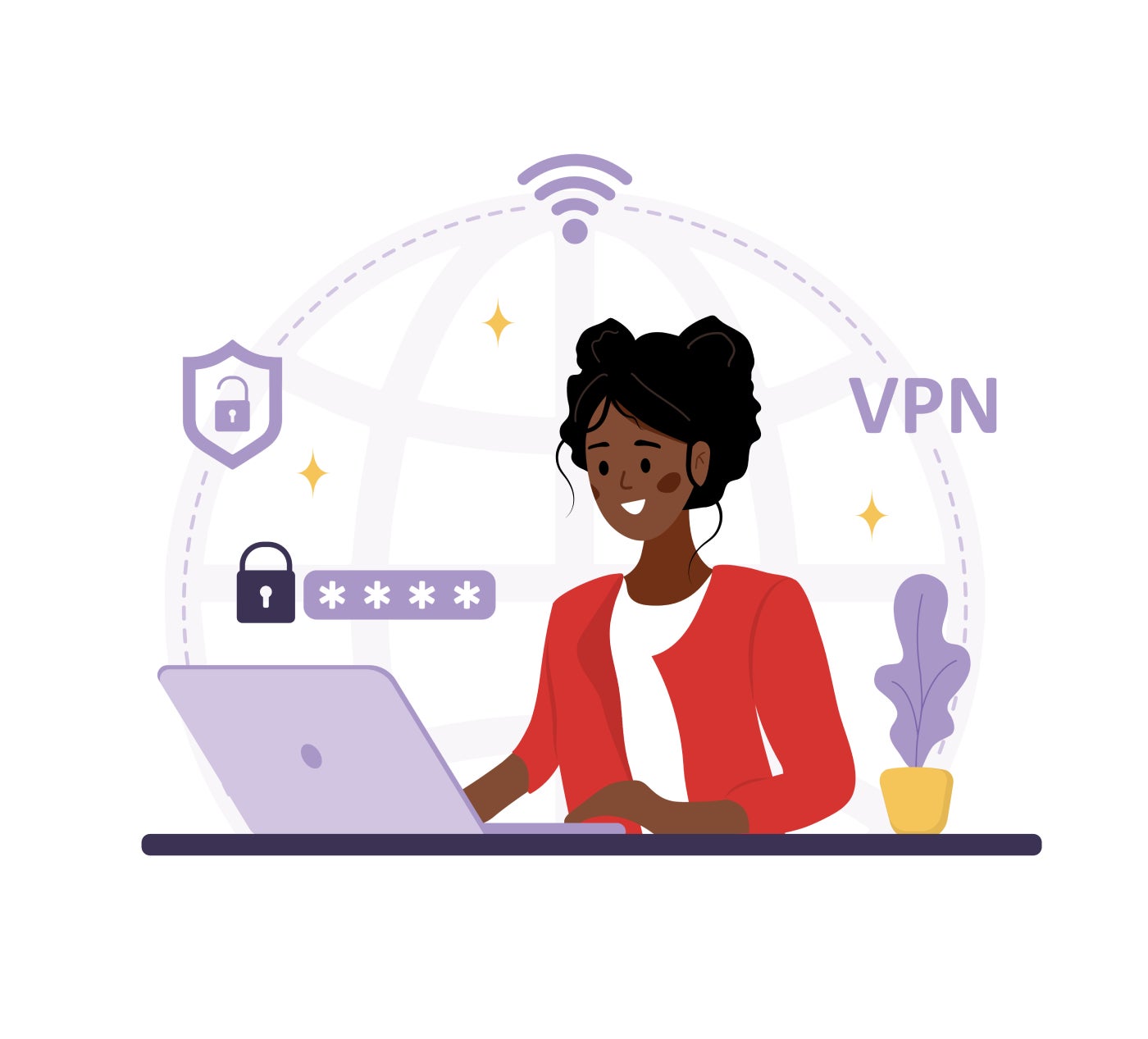
Leave a Reply